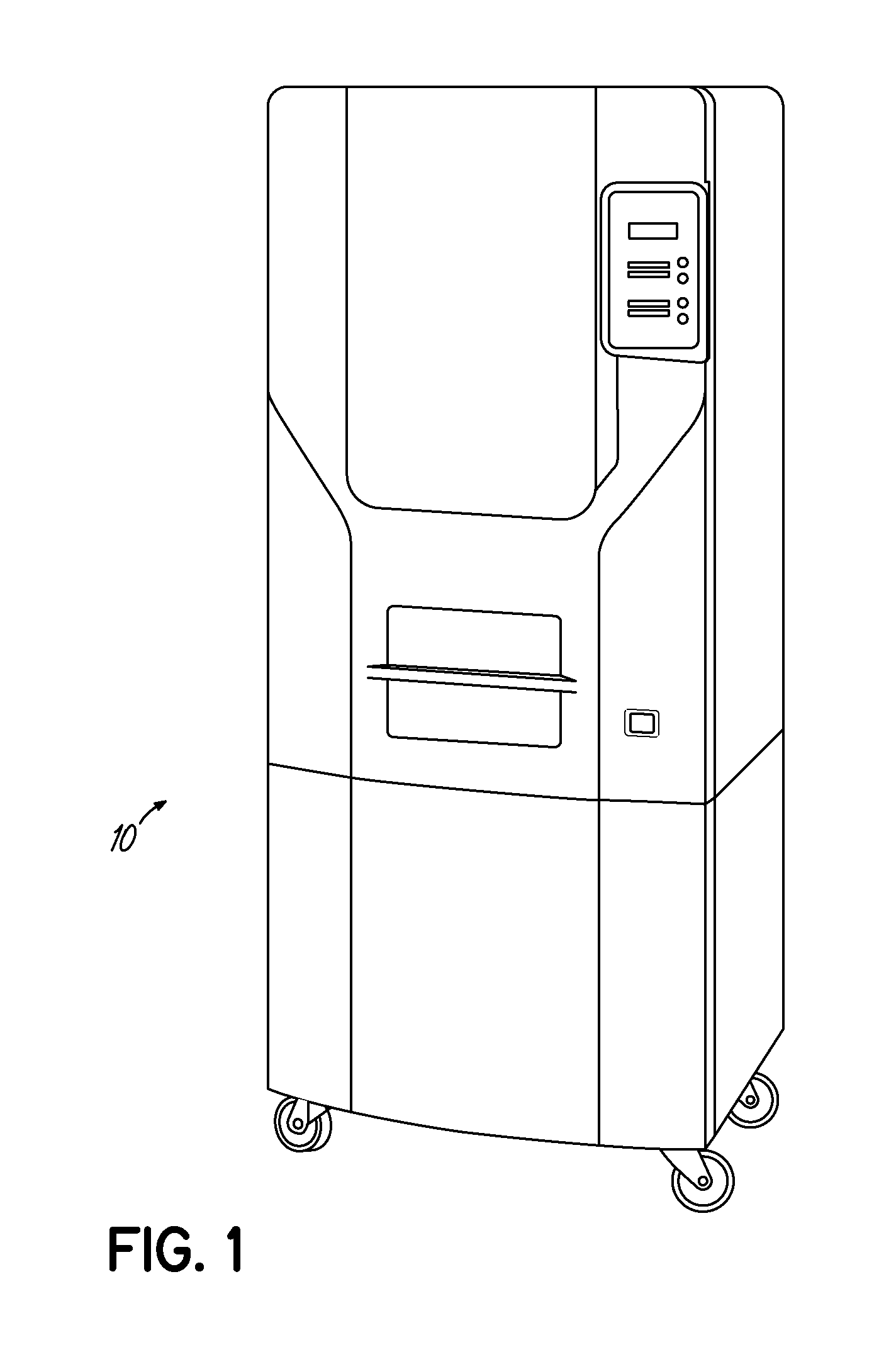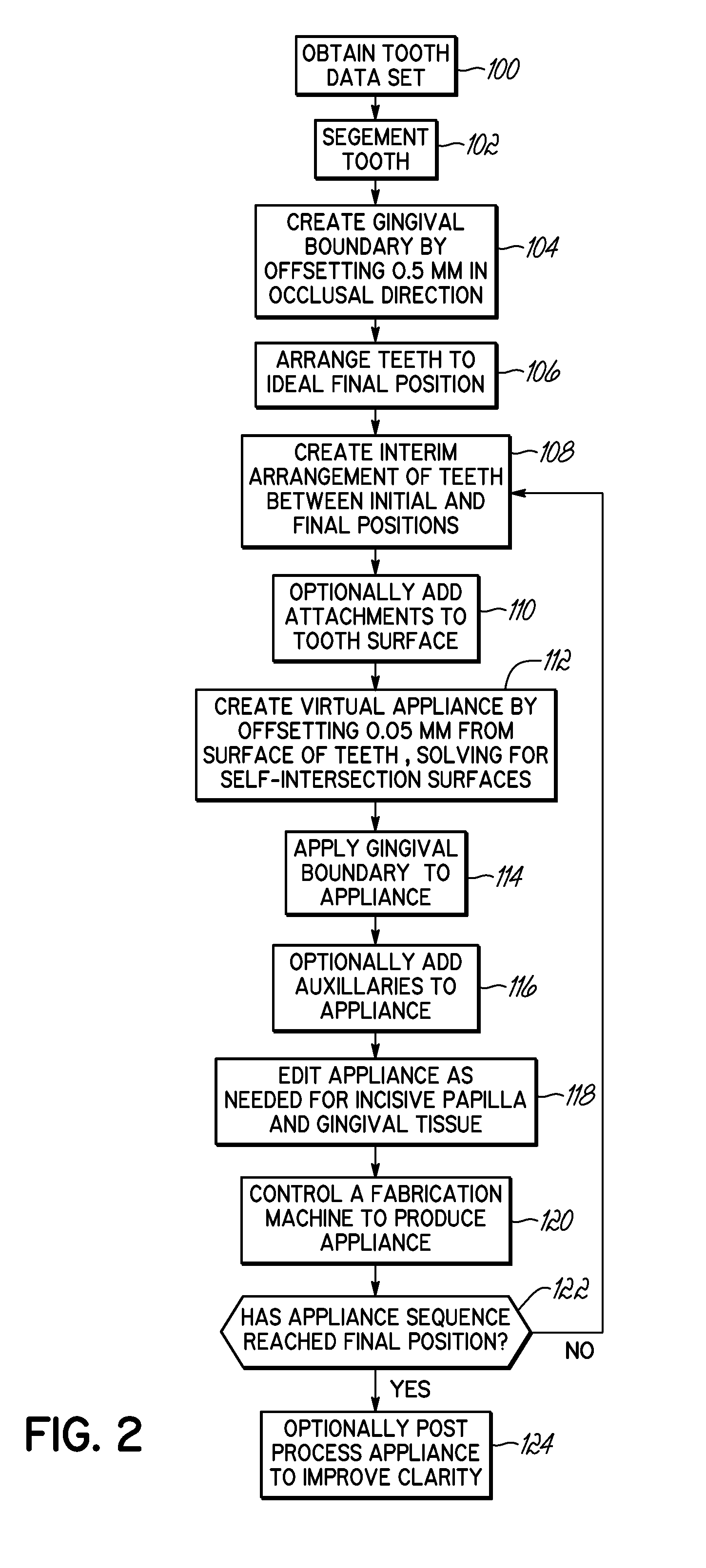Direct Manufacture of Orthodontic Aligner Appliance
a manufacturing process and aligner technology, applied in the field of orthodontic appliances, can solve the problems of inconvenient delivery of appliances, inconvenient treatment, and inconvenient treatment of patients, and achieve the effect of rapid delivery of appliances
- Summary
- Abstract
- Description
- Claims
- Application Information
AI Technical Summary
Benefits of technology
Problems solved by technology
Method used
Image
Examples
Embodiment Construction
[0035]In general, one embodiment of the invention includes a directly manufactured orthodontic appliance capable of moving teeth according to a predetermined treatment plan, such as illustrated in FIGS. 3 and 4. In particular, the orthodontic appliance may move one or more teeth from one orientation to another which advances the overall orientation of the teeth toward their final orthodontically correct and aesthetically desired positions. In one embodiment of the invention, a series of individual orthodontic appliances may be utilized for complete orthodontic treatment. Accordingly, each appliance in the series may move one or more teeth a prescribed amount. Cumulatively, these individual amounts may result in complete treatment of the patient's malocclusion.
[0036]By way of example only, in one embodiment, the orthodontic appliance may include an aligner. Such aligners may be similar to those used in the prior art, but differ in the manner in which the aligner is made, and in detai...
PUM
 Login to View More
Login to View More Abstract
Description
Claims
Application Information
 Login to View More
Login to View More - R&D
- Intellectual Property
- Life Sciences
- Materials
- Tech Scout
- Unparalleled Data Quality
- Higher Quality Content
- 60% Fewer Hallucinations
Browse by: Latest US Patents, China's latest patents, Technical Efficacy Thesaurus, Application Domain, Technology Topic, Popular Technical Reports.
© 2025 PatSnap. All rights reserved.Legal|Privacy policy|Modern Slavery Act Transparency Statement|Sitemap|About US| Contact US: help@patsnap.com



